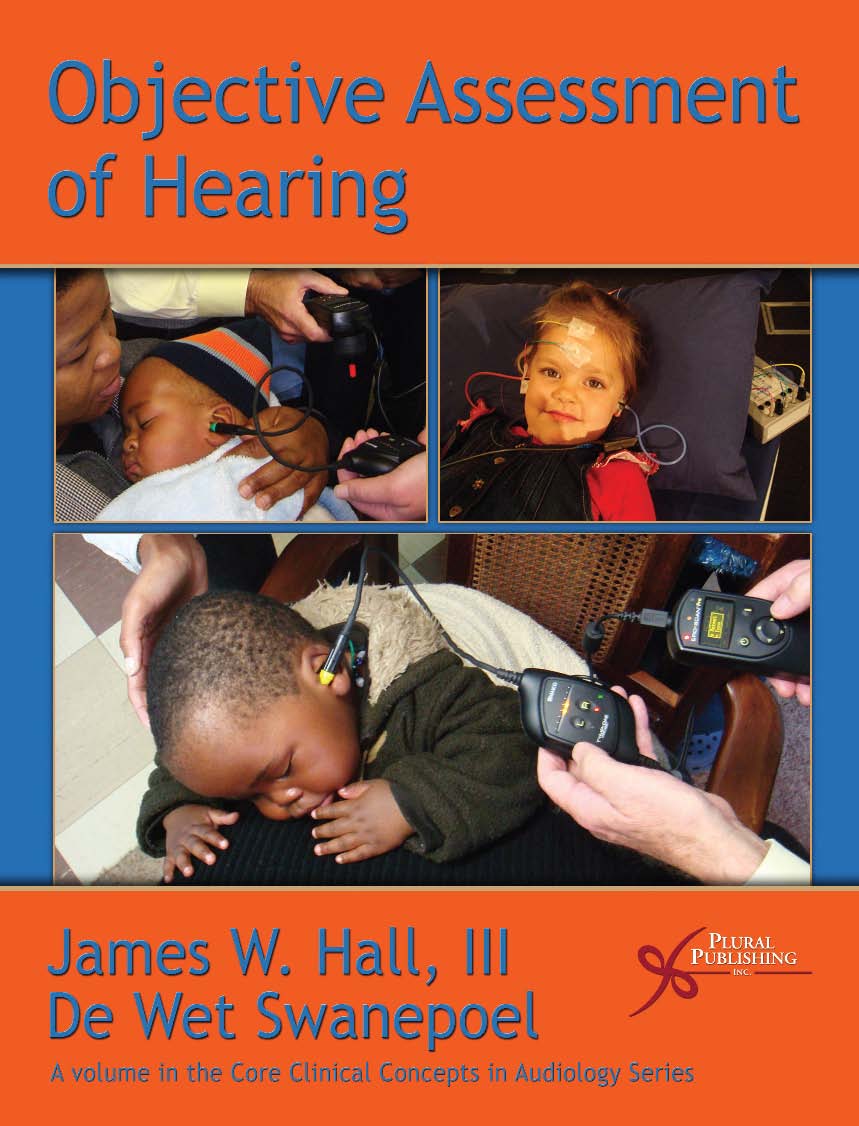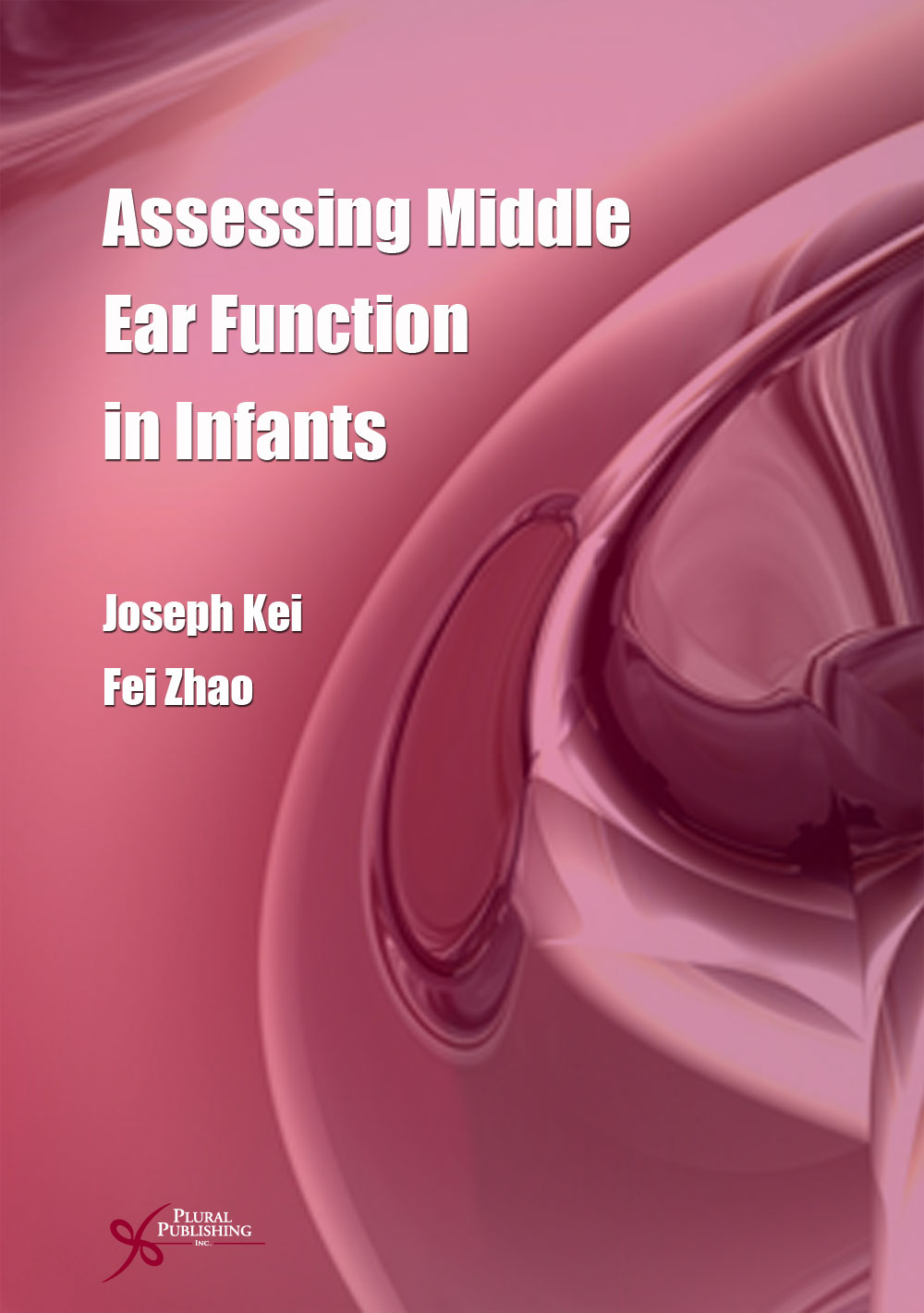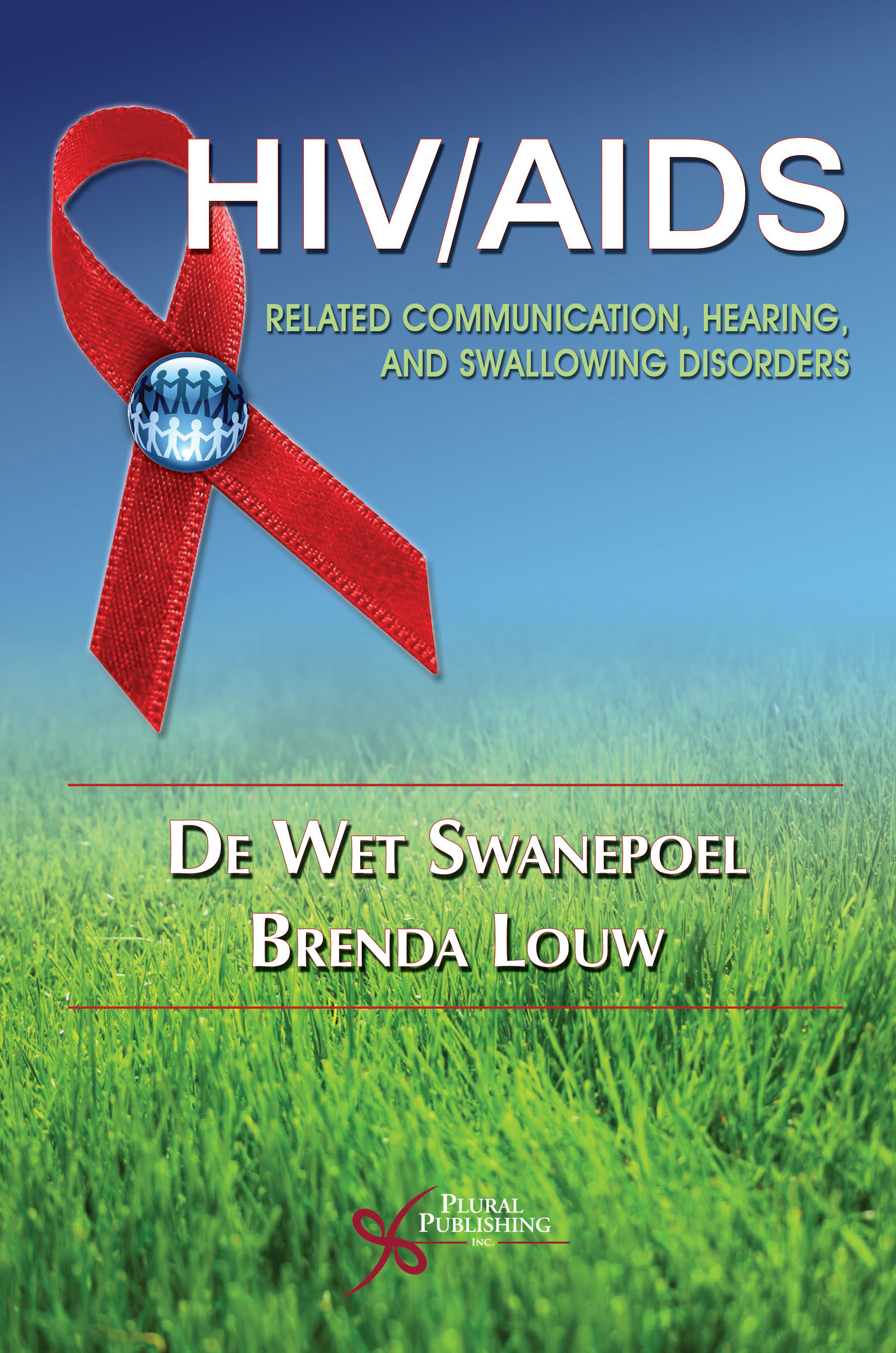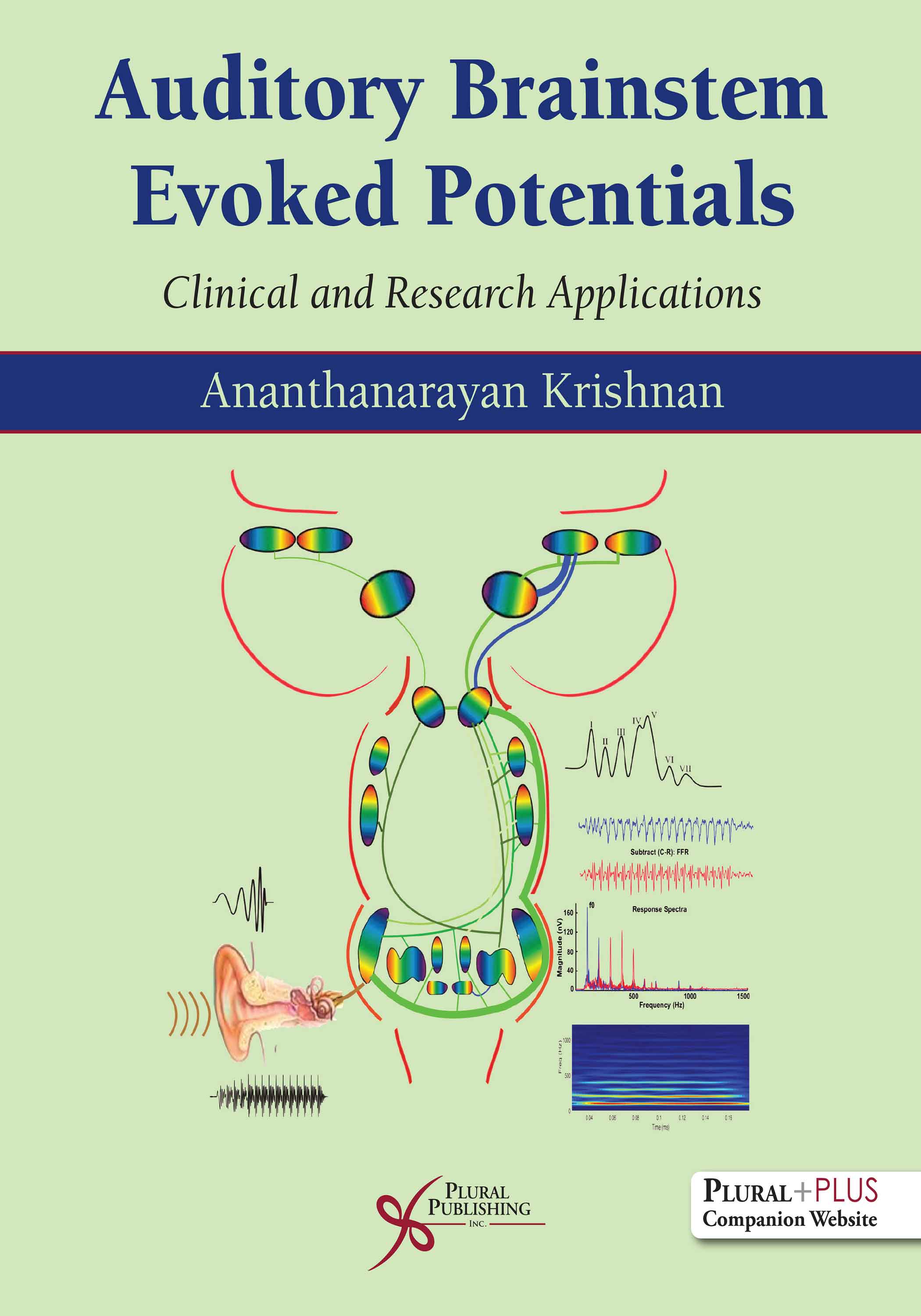
Objective Assessment of Hearing
First Edition
James W. Hall, III, De Wet Swanepoel
Details: 200 pages, 2-Color. Softcover, 7" x 10"
ISBN13: 978-1-59756-353-6
© 2010 | Available
For Instructors
Purchase
This book bridges the gap between theory and clinical application for electro-acoustic and electro-physiologic assessment of hearing loss across the age range. Strategies and techniques for screening and diagnosis of hearing loss are presented clearly and simply. The authors incorporate findings of accumulated clinical experience and recent clinical research in a readable review of electro-acoustic measures (immittance measures and otoacoustic emissions) and electro-physiologic measures (electrocochleography, ABR and ASSR) that are essential for best practice in audiology today. This book is a one-stop resource for clinicians who are responsible for the diagnostic auditory assessment of children and adults.
Douglas L. Beck, AuD, speaks with James W. Hall III, PhD, about his book, Objective Assessment of Hearing (co-authored by De Wet Swanepoel) in The Hearing Review. Read the interview here.
Reviews
"The book is squarely aimed at providing students with an introduction to the clinical application of objective auditory tests. The authors succeed in providing an in-depth discussion of important concepts, while maintaining a practical focus."
—Ryan McCreery, M.S. (Boys Town National Research Hospital), Doody's Review Service (2010)
"... This new text provides a succinct and precise description of the clinical applications of objective assessments. The authors have done an exemplary job explaining why and how an objective assessment tool is used in ordinary clinical settings. Numerous figures and tables are integrated with the text to enhance understanding of the clinical materials by the reader."
—Joseph Kei, School of Health and Rehabilitation Sciences, University of Queensland, International Journal of Audiology (2010)
"Objective Assessment of Hearing is an excellent first book in the Electrophysiology component of the Core Clinical Concepts Series. This book is practical and easy reading that students and practitioners will appreciate...this book's focus on clinical learning will be highly appreciated by students and clinicians. Course instructors might need to supplement reading on this topic for advanced scholarship or teaching purposes. The use of color illustrations throughout increases the book's effectiveness. Overall, this is a practical, clinical handbook style text that efficiently provides the most salient information in an appealing format."
—Ishara Ramkissoon, Dept of Speech Pathology and Audiology, University of Alabama, Ear & Hearing (2011)
"This text is intended for students, clinicians, and the instructors of audiology programs. The authors write in a style that is easy to read and appropriate for their intended audience . . . provides a succinct and precise description of the clinical applications of objective assessments. The authors have done an exemplary job explaining why and how an objective assessment tool is used in ordinary clinical settings . . . Having read this book, I would agree with the authors that this 186 page book provides contemporary 'pedagogic materials that focus on basic clinical methods and knowledge'. I found this book a useful reference for practicing audiologists too."
—Joseph Kei, International Journal of Audiology (2011)
- Chapter 1: Rationale for Objective Hearing Assessment
A Word About Terminology
Important Terms and Concepts
Detection versus Diagnosis
Clinical Limitations of Behavioral Audiometry
Cross-Check Principle Revisited
Chapter 2 Aural Immittance Measurements
Introduction
Terminology
Historical Perspective
Current Status of Immittance Measures
Functional Anatomy
Introduction
External Ear Canal
Middle Ear
Cochlear and Retrocochlear Pathways
Identification (Screening) of Auditory Dysfunction
Tympanometry
Introduction
Jerger Tympanogram Classification System
Gradient
Single versus Multi-Frequency and Multi-Component
Tympanometry
Wide Band Reflectance
Acoustic Reflex Thresholds for Broadband Noise Signals
Diagnosis of Auditory Dysfunction
Introduction
Tympanometry Findings in Auditory Dysfunction
Toynbee and Valsalva Techniques
Sensitivity Prediction by the Acoustic Reflex (SPAR)
Other Acoustic Reflex Predictive Techniques
Contraindications to Acoustic Reflex Measurement
Diagnosis Value of Patterns of Aural Immittance Findings
Introduction
Case A: Vertical Acoustic Reflex Pattern (Mild Conductive)
Case B: Inverted L Acoustic Reflex Pattern (Moderate
Conductive)
Case C: Vertical Acoustic Reflex Pattern (Facial Nerve
Disorder)
Case D: Diagonal Acoustic Reflex Pattern (Sensory)
Case E: Diagonal Acoustic Reflex Pattern (Neural)
Case F: Inverted L Acoustic Reflex Pattern (Neural)
Case G: Horizontal Acoustic Reflex Pattern (Brainstem)
Case H: Uni-Box Acoustic Reflex Pattern (Brainstem)
Chapter 3 Otoacoustic Emissions
Introduction
Screening for Hearing Loss
Introduction
OAE Test Protocols for Newborn Hearing Screening
Pass versus Refer Criteria
Simple Steps for Minimizing Refer Rate
Combined OAE and Admittance/Reflectance Technologies
OAE Screening with Tele-Health Technology
Newborn Hearing Screening with OAE and ABR
Technology
Introduction
Two-Step Hearing Screening with OAE and ABR
Combined OAE and ABR Hearing Screening
School Age and Pre-School Screening
Introduction
School-Age Children
Pre-School Children
Estimation of Hearing Loss
Introduction
Estimating Hearing Loss with OAEs
Differences Between OAE and Audiogram Findings
Clinical Considerations and Concerns
Subject (Non-Pathological) Factors
Pathologic Factors
Chapter 4 Electrocochleography (ECochG)
Introduction
Test Protocol
Estimation of Hearing Thresholds
Diagnostic Applications of ECochG
Enhancement of ABR
Auditory Neuropathy
Clinical Considerations and Constraints
Subject Factors
Pathologic Factors
Concluding Comment
Chapter 5 Auditory Brainstem Response (ABR)
Hearing Screening for Identification of Hearing Loss
Automated ABR
Background
Clinical Findings
Estimation of Hearing Thresholds
Air-Conduction Click-Elicited ABR Measurement
Rationale
A Practical Test Protocol
Bone Conduction Click-Elicited ABR Measurement
Rationale and Indications
A Practical Bone Conduction ABR Protocol
Frequency-Specific (Tone Burst) ABR Measurement
Rationale
A Practical Tone Burst ABR Protocol
Analysis and Interpretation
Introduction
Steps in ABR Analysis
Analyses of ABR Waveforms for Air Conduction Click
Stimulation
Analyses of ABRs for Bone Conduction Stimulation
Analyses of Frequency-Specific ABRs (Tone Burst
Stimulation)
Clinical Considerations and Constraints
Non-pathologic Factors
Pathologic Factors
Noise, Sedation, and Anesthesia
ABR Measurement Without Sedation or Anesthesia
Plotting Electrophysiologically-Estimated Auditory Thresholds
Chapter 6 Auditory Steady State Response (ASSR)
Historical Perspective on the Auditory Steady-State Response
Defining the Auditory Steady-State Response
Introduction
Response Generation
Neural Generators
Stimulus Characteristics
Type of Stimuli
Presentation of Stimuli
Response Acquisition
Improving the Signal-to-Noise Ratio
Response Analysis
Spectral Analysis Approach
Phase Analysis Approach
Considerations in Response Detection
Subject Factors
Age
Sleep
Anesthesia
Attention
Internal Noise
Objective Hearing Assessment with the Auditory Steady-State Response
Hearing Screening
Estimating Behavioral Threshold
Threshold Accuracy
Adults
Infants
Auditory Neuropathy
Artifactual Responses
Bone Conduction Auditory Steady-State Responses
Sound-Field ASSR
Clinical Protocols and Equipment
Future Applications of the Auditory Steady-State Response
Chapter 7 Recommendations for Objective Identification and Estimation of Hearing
Loss
Introduction
Recommendations for Detection
Newborns and infants
Combined OAE/ABR Infant Hearing Screening
Pre-School and School-Age Children
Recommendations for Diagnosis
Infants Younger Than 6 Months
Infants 6 to 36 Months
Children and Adults
Test-Battery Approach
New Directions for Research
Detection of Hearing Loss
Diagnosis of Hearing Loss
Chapter 8 Illustrative Case Reports and Clinical Findings
Introduction
Case: Frequency-Specific ABR for an Infant Under Melatonin-Induced
Sleep
CASE: ABR Evaluation of an Awake Child
CASE: Auditory Neuropathy and Conductive Hearing Loss
CASE: Bilateral Conductive Loss
CASE: Unilateral Sensory Hearing Loss
CASE: Bilateral Profound Sensory Hearing Loss
REFERENCES

Self-Assessment of Hearing
Second Edition
William Noble
Details: 300 pages,B&W, Softcover, 6" x 9"
ISBN13: 978-1-59756-531-8
© 2013 | Available

Assessing Middle Ear Function in Infants
First Edition
Joseph Kei, Fei Zhao
Details: 200 pages, B&W, Softcover, 7" x 10"
ISBN13: 978-1-59756-391-8
© 2012 | Available

HIV/AIDS Related Communication, Hearing, and Swallowing Disorders
First Edition
De Wet Swanepoel, Brenda Louw
Details: 456 pages, B&W, Softcover, 6" x 9"
ISBN13: 978-1-59756-262-1
© 2010 | Available

Auditory Brainstem Evoked Potentials: Clinical and Research Applications
First Edition
Ananthanarayan (Ravi) Krishnan
Details: 379 pages, B&W, Softcover, 8.5" x 11"
ISBN13: 978-1-63550-239-8
© 2023 | Available


